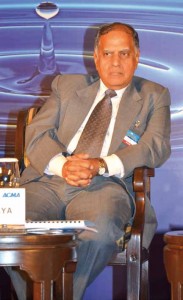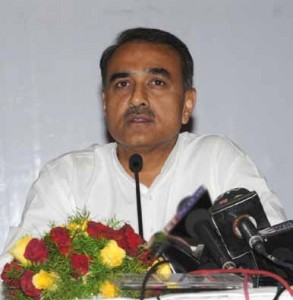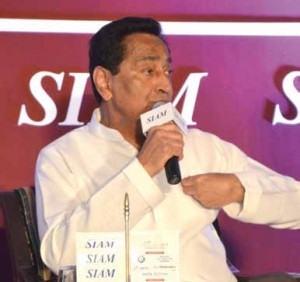The Society of Indian Automobile Manufacturers (SIAM) organized its 52nd Annual Convention on “The Auto Industry: India in the Changing World Order” in New Delhi on September 5. The Union Minister of Heavy Industries & Public Enterprises, Mr. Praful Patel, was the Chief Guest on the occasion.
In his presidential address, Mr. S. Sandilya, SIAM President, spoke on the resilience of the Indian automotive industry in the year gone by, addressing challenges such as inflation, high interest rates and rapid hikes in petrol prices. Subdued industry growth led to successive downward revisions in the sales forecast by SIAM.
Referring to the Government’s tax policy, Mr. Sandilya said the vehicle industry is the most highly taxed one in the country.
“If we add up all the Central and State taxes, the overall tax burden on cars end up being as high as 62% for small cars and a whopping 82% for large cars”.
Speaking on the high taxes on petrol, he stated that: “personal mobility in the country would perhaps be carrying the highest tax burden as compared to any other engineering product or service.”
Stressing the need for an appropriate level of taxation on mobility, he said: “The people of India deserve to pay less for their mobility which also makes a huge contribution to economic development and growth”.
In his address, Mr. Praful Patel, spoke on the need to pursue a healthy rate of growth. “From an India perspective, until we grow at 8-9 per cent, I don’t think we can ever be satisfied with the rate of growth of the economy.”
The first keynote session on the ‘Auto Industry: Thriving, Growing & Leading’ was addressed by Dr. Abhay Firodia, Past President of SIAM, and Chairperson, Force Motors, Mr. Gary Johnson, Vice President, Manufacturing, Ford Asia Pacific and Africa, Mr. Phillippe Divry, Sr. Vice President, Truck Joint Ventures, Volvo AB, and Board Member, VE Commercial Vehicles, and Mr. Ravi Pisharody, Executive Director – Commercial Vehicles, Tata Motors.
Dr. Firodia called out for the country to assume a leadership position. “The whole world is in India. There isn’t any manufacturer on the global scene not present in India. Either with manufacturing plants, or with assembling plants, every major components manufacturer who is a major tier 1 or tier 2 supplier to the automobile industry has also dropped anchor here. We have the wherewithal”, he added.
Mr. Gary Johnson used the opportunity to talk about the potential of the pan-India auto sector: “The opportunity to be part of a thriving, growing industry in the Asia Pacific, but also in India, is something that most of us will not see in our lifetime.”
Reiterating the importance of flexibility, he outlined the current economic situation in Europe and the importance of flexibility in the manufacturing sector to react to a down market.
Talking about insights from his role as the Head of Manufacturing in the APAC-Africa-Australia region, he added: “The automotive industry in this region is exciting.
If you think back at what all we’ve gone through, and the ability to grow, now we’re on the leading edge.The opportunities support the growth, and here in India, it’s going to be tremendous over the next 5-10 years.”
Speaking on the ‘Major Trends of the Global Commercial Vehicles Industry’, Mr. Phillippe Divry began with speaking on the importance of India’s vibrance as a global economy. “India really exemplifies all the trends which are now shaping the global vehicle industry.”
Mr. Ravi Pisharody observed: “In the emerging market, particularly BRIC countries, it looks like the industry is set to thrive, grow and lead.”
The special plenary session 1 was addressed by Mr. Kamal Nath, Minister for Urban Development, Dr. Pawan Goenka, Past President, SIAM, and President, Automotive & Farm Equipments, Mahindra & Mahindra, and Mr. K.N. Radhakrishnan, President & CEO, TVS Motor Company.
Mr. Kamal Nath addressed the session and spoke on the evolution of the scale and the innovations in the auto industry.
Commenting on the cyclical changes in the industry, he said: “I’ve seen moments in the industry, of gloom, and sometimes they thought it was doom, and sometimes I’ve seen moments in this industry of boom.”
Speaking of the global response to these changes in the economy, he mentioned that the world economy has become accustomed to a boom. “There was a time we were growing in excess of 30%, now if its 20%, or 15%, you say it is gloom.”

Looking back at the last 10 years, he continued: “Who would have thought it was globalization which drove the auto companies to come to India? At the heart of globalization lies global competitiveness, and unless you are globally competitive, you can’t survive. It is this global competitiveness which is going to be the future of the automobile industry.”
Referring to the emergence of Asia as the new market, he said: “When Asia emerged, how did India emerge? A young population. But until three years ago, when we talked of a young population, this young population hadn’t kicked in.
Now demographics have started kicking in, and we have the largest aspirational society on this planet, in India with growing, disposable incomes.”
Emphasizing the importance of urbanization, he added: “Urbanization is taking place at a pace like never before. We will have 600 million people next year in our urban bodies. Not in Delhi, and Mumbai and Chennai, but in our smaller cities.”
The panel discussion on Managing Growth in Changing World Order saw participation from Mr. Rajiv Bajaj, Managing Director, Bajaj Auto, Dr. Goetz Klink, Global Automotive Practice Head, A T Kearney, Mr. S. Sundareshan, Secretary, Ministry of Heavy Industry & Public Enterprises, Mr. S. Rao, Secretary, Ministry of Commerce & Industry, and Dr. Sudhir Krishna, Secretary, Ministry of Urban Development, and Mr. Sanjiv Kumar, CEO, Automotive Engines Business, Greaves Cotton.
Referring to the Indian Government’s role in the automobile sector, Mr. Sundareshan observed: “First and foremost, we are going to soon form the National Automotive Board as an independent body, to co-ordinate the work of the various sectors in the automobile sector, act as a means of communication between industry and government. Secondly, we are implementing, even as we talk, a half a billion program of NATRIP, the national automotive research organization. We have recently unveiled the Mission for Electric Mobility. It is envisaged that over the next 6-7 years, the government will be spending between 2-3 billion dollars to make this program attractive, the total investment between 4-5 billion dollars. We expect this program be put in place and launched in the next 2-3 months. Lastly, in the 12th Plan, we have made far reaching proposals for participating in the development of the automobile industry.”
Mr. Rao spoke on the need to support the export for automobile sector. “It is expected by 2015 that 50% of the world trade will essentially be between developing economies. We need to align our policies and our activities within this sector to match with the growing demand. On the export front, the automotive industry’s contribution has not been matching with what we thought was the possibility.”
Dr. Sudhir Krishna spoke on the need for planned urbanization and mobility-based planning in the planning of cities. “In partnership with sister Ministries and State Governments, we have launched a series of Mass Rapid Transit projects spearheaded by the metro rail projects. “Mini buses need to be given greater attention. The network of roads in our cities is unable to handle large buses. As a result, many areas do not have the benefit of connectivity.”
The Industry Leader’s Session was addressed by Mr. Vikram S. Kirloskar, Vice President, SIAM, and Vice Chairman, Toyota Kirloskar Motor, Mr. Adi Godrej, President, CII & Chairman, Godrej Group, and Mr. Michael Boneham, President & Managing Director, Ford India.
Closing the SIAM Convention during the Industry Leader’s Session, Mr. Adi Godrej called for the extension of interest subvention scheme to more sectors like automobiles and engineering to boost exports.
He also focused on the need for freight subsidy for entering new markets and a creation of export development fund for aiding SMEs. Expressing concern over the deepening industrial slowdown, he called for multi-pronged strategy for reviving the economy.




